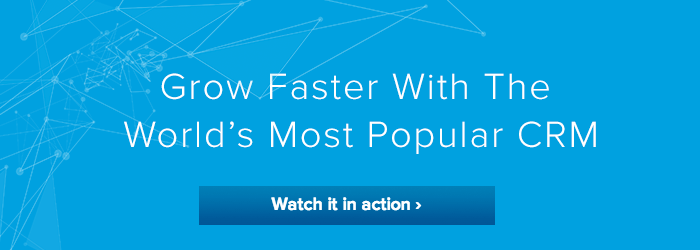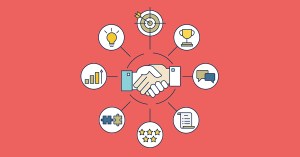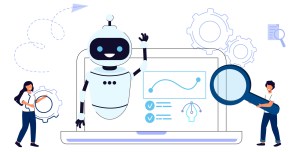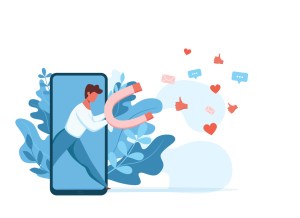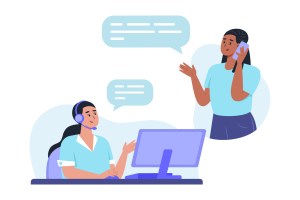The Top 10 Things All Customers Actually Want



Keep track of the public’s perception of your company with social media listening, and engage customers and non-customers with honest, sincere conversations.

Salesforce Canada
Beyond your products and services, customers have needs, and it’s up to your company to satisfy them to ensure the highest customer satisfaction levels. This is best accomplished when you use technology to your advantage.
For example, anyone who contacts customer service, sales, or other departments wants to interact with knowledgeable representatives. When you keep all members of your staff updated on your company’s capabilities—through an internal knowledge base—it helps ensure customers get the same level of quality information and service regardless of who they talk to. You also want everyone to keep your CRM platform and other integrated software full of valuable details regarding customer interactions and where individuals are in their customer journey.
Give customers an experience worth talking about, then be sure to join the conversation. Keep track of the public’s perception of your company with social media listening, and engage customers and non-customers with honest, sincere conversations. Once you have a quality relationship with customers, you’ll find they’re more loyal. Learn more in the infographic below.
The Top 10 Things All Customers Actually Want
The Top 10 Things Customers Want
- Knowledgeable Representatives
- Customers want the employees who serve them to be knowledgeable and competent
- They want to know if representatives have solved similar types of problems for other clients in the past
- When they have, this builds confidence during the buying experience
- It’s important for representatives to constantly improve their knowledge
- To build lifetime customer satisfaction, provide staff with detailed knowledge or information about your company and its products and services.
- An experience worth talking about
- Customers love to talk
- They want to share about their experiences, especially:
- What excites them
- What bothers them
- Remember: News spreads whether a customer is giving praise or venting
- Social media turns up the volume.
- Turns an customer’s 200 Facebook friends into a PR agency
- Make it your company’s mission to turn those people into free promoters of your products and services
- Social media turns up the volume.
- They want to share about their experiences, especially:
- Customers love to talk
- Sincerity and trust from company representatives
- Customers want to know if they are liked by the people serving them
- Customers can discern this from how representatives interact with them:
- Do employees use their name?
- Do they really listen?
- Do their voices demonstrate sincere empathy?
- They also want to know if those serving them really care
- They can discern this from a representative’s:
- Tone of voice
- Questions asked
- Helpfulness
- They can discern this from a representative’s:
- Help customers know they can trust the people serving them
- Customers can discern this from a representatives:
- Confidence
- Follow through
- Remember: Try to have all phone calls and emails returned or answered in 24 hours or less
- Customers can discern this from a representatives:
- Customers can discern this from how representatives interact with them:
- Customers want to know if they are liked by the people serving them
- Ease of doing business
- 23% of customers cite ease of doing business with an organization as one of the top three most important things to them
- Customers want simplicity
- Websites should be easy to navigate
- Products should be easy to access
- It should be easy to contact an organization
- Customers expect companies to communicate with them on their preferred channel, be it in person, online, or on the phone
- Consider this study by American Express:
- Channel preference depends on the type of interaction
- For simple inquiries, online self-serve and email are the preferred channels
- As the inquiry gets more complex, speaking with a live agent becomes the preferred channel
- Consider this study by American Express:
- Follow up and touch base
- Customers expect some follow-up efforts
- The majority don’t find “just touching base” a nuisance
- Keeping in touch can deflect incoming contacts, which can:
- Reduce costs
- Boost customer satisfaction
- Improve revenues
- Before increasing or beginning outbound communication, find out:
- What customers want to hear from you
- When they want to hear from you
- The channel(s) they want you to use
- Give customers the right amount of information at the right time through the channel they prefer. For example:
- Utility customers often prefer notifications texted to them
- B2B customers generally prefer periodic emails notifying them of scheduled maintenance or contract renewals
- Retail and tech customers often prefer to keep an eye on social media for the latest news
- Recovery
- When something goes wrong, it’s a valuable opportunity to show how great your service really is
- Customers want their problems solved quickly
- Customers don’t want to hear:
- Excuses
- Who’s to blame
- Why it happened
- Customers often judge the quality of service by the way a company recovers
- If your company recovers well and gracefully, customers will often forgive mistakes
- Steps to Recover well:
- 1. Apologize
- Ask for forgiveness.
- Don’t say, “I’m sorry you feel that way.” Give a real apology.
- 2. Review
- Review the complaint with your customer.
- Treat the customer like a customer service consultant and let them explain:
- What went wrong in the customer experience
- What you should do to fix it
- 3. Fix
- Resolve the issue and/or follow up
- Try to make it happen within 20 minutes
- If the issue can’t be fixed right away, follow up within 20 minutes to check on the customer and explain the progress
- Follow up after fixing things to show concern and appreciation
- Resolve the issue and/or follow up
- 4. Document
- Record how you permanently fixed the problem
- Try to identify trends or patterns that hint at underlying causes
- Flexibility
- It’s important to be as flexible as possible.
- Tell customers what you can do, not what you can’t.
- Customers look for:
- Responsiveness
- Creativity
- Salespeople who make it easy to do business with them
- Try to avoid using words or phrases like:
- “That’s our procedure.”
- “No.”
- “It can’t be done.”
- It’s important to be as flexible as possible.
- Maintain enthusiasm
- Attitude is contagious
- No one appreciates bored or unhappy customer service reps
- Even when you have a high level of personal service, look for ways to go farther
- Tips to provide enthusiasm
- During customer interactions be sure to have positive:
- Eye contact
- Facial expressions
- Voice tone
- Body language
- Word choice
- Ask questions to make sure you understand the needs of the customer
- Acknowledgement of a customer is the initial opportunity to put enthusiasm on display
- Customers should be able to see and hear your enthusiasm when face to face.
- Let them see excitement in your facial expressions and eye contact.
- Customers should be able to hear your enthusiasm over the phone.
- Voice, tone, and inflections tell a customer if you’re really interested in providing assistance.
- Customers should be able to hear your enthusiasm via email.
- Use word choice and punctuation that match how you would exhibit enthusiasm if you were face to face.
- Customers should be able to see and hear your enthusiasm when face to face.
- Attitude is contagious
- Speedy support
- A study by Forrester Research of more than consumers found:
- 71% of consumers believe that valuing their time was the most important thing a company could do to provide them with good customer service.
- In order for support agents to solve problems fast and efficiently, they need to be:
- The right people
- Trained to know the product or service
- A study by Forrester Research of more than consumers found:
- Moments of WOW
- What is a moment of WOW?
- It’s when a customer service agent to goes above and beyond the call of service to make a customer happy.
- This could be anything from a free return to a discount.
- Customers love to be surprised with extreme acts of kindness.
- To provide moments of WOW, establish a company culture that promotes and encourages it.
- What is a moment of WOW?
Conclusion
Get more loyal customers by providing them with top-notch service and giving them what they want and deserve.

